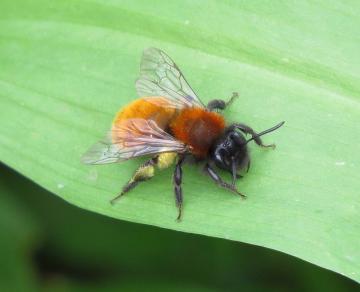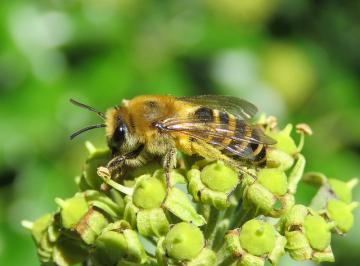Ground Nesting Bees
Some solitary species take refuge underground, where their young are better protected from predators and the elements. These mining and digging bees can often be found in large aggregations, with numerous nests side-by-side. With so many nests together, some people mistake these aggregations for swarms of bees, but the bees rarely help each other out directly. Rather, by being present in larger numbers they are at an advantage: they look more frightening and confusing to predators, and, if attacked, each bee has a lower probability of being eaten. While we are unlikely to get these sorts of bees in our nest boxes, they are common in garden lawns. Look out for the small ant-hill-type mounds and welcome your visitors as part of the family. In fact, if you are visiting any of our nest boxes in the Oxford Colleges, many of the college quads are home to nesting aggregation of the tawny mining bee (see photo)!

The female Tawny Mining Bee (Andrena fulva) is one of our most striking solitary bees. Males, by comparison, are less distinct and often confused for closely related species
Photo credit: Steven Falk

Female ivy bees (Colletes hederae) are found nesting in dense aggregations in sandy areas. As the name suggests, this species feeds primarily on common ivy (Hedera helix) and is one of the latest active bee species, with a flying period from September to as late as November. It is also one of the newest UK species, having first arrived in 2001.
Photo credit: Steven Falk